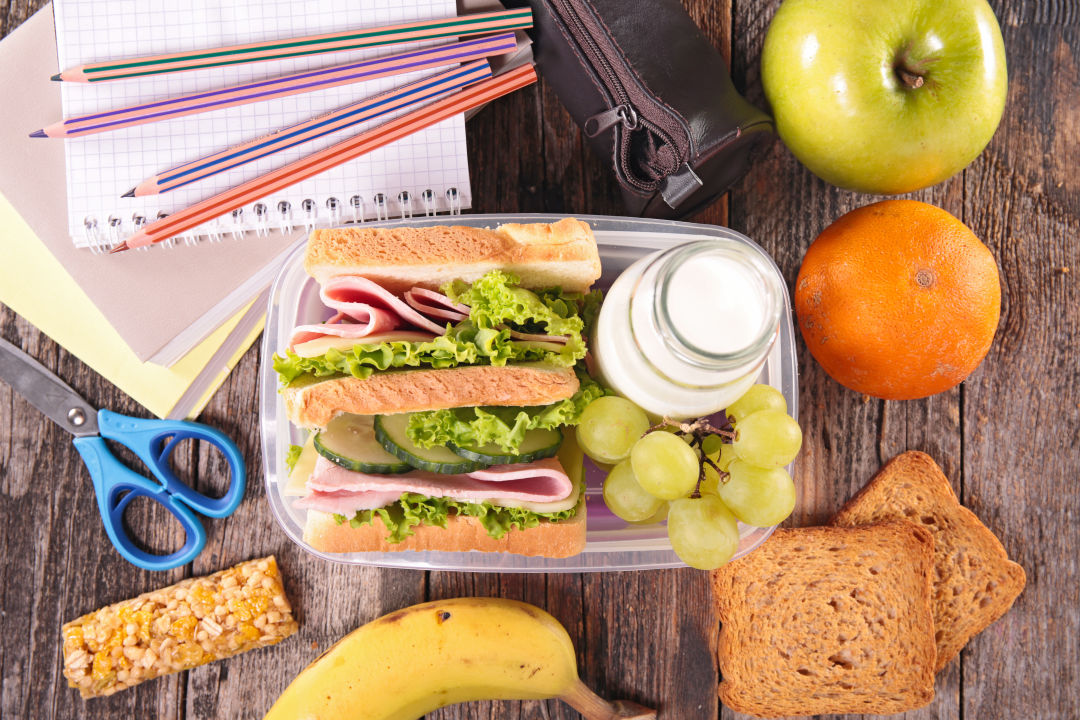5 Ways to Kickstart a Healthy School Year

Image: Shutterstock
Summer vacation is almost over and school is right around the corner. So there’s no better time—or excuse—to incorporate healthy habits into your family’s lifestyle before sending the kids back to school.
“When children are physically active and eating a balanced diet of fruits, vegetables and whole grains, their immune systems will be much stronger to combat the germs that linger at school,” says Amanda Kinney, clinical dietitian at Sarasota Memorial Hospital.
Here are five tips Kinney suggested to start the year off with a healthy bang.

Sarasota Memorial Hospital clinical dietitian Amanda Kinney.
Image: Courtesy Photo
Eat Breakfast
Everyone says it, but breakfast is the most important meal of the day—especially for children, Kinney says. Eating breakfast—think oatmeal with fruit or nuts, or a toaster waffle with fruit (without all the sugary syrup)—sets the tone for how children will perform in school. The more energy children have from breakfast, the better their focus will be throughout the day.
Also, make sure your child is drinking lots of water. Stay away from the sodas and teas, and focus more on the water intake. Hydration is key for happy, healthy cells.
Cook Your Meals
This helps to slow down the eating and bring the family together after a long day at school and work, Kinney says. The dietitians at SMH recommend turning off the television and cell phones to make the family meal about the food and the talk around the table.
Even though life gets booked up with activities and schoolwork, Kinney recommends making it a priority to have a couple of family meals at home.
“Get the kids involved in planning out the meals for the week, going grocery shopping and allowing them to assist in the cooking,” she advises. And if you’re crunched for time, the planning should only take about 30 to 60 minutes for the entire week, she says.
When the school year gets hectic, poor food choices can be made when you don’t know what is in the refrigerator at home or haven’t planned the meals, Kinney says.
Be Active
When the kids get home from school—and if they haven’t had a lot of physical activity during school hours—make it a point to go to the park, play out in the backyard or walk the dog. Physical activity helps children maintain a healthy weight, Kinney says.
Eat Combination Snacks
These are great power snacks for after school. A cheese stick and an apple, celery and peanut butter, or yogurt and fruit are healthy combination options. Plus, adding a vegetable or fruit to the afternoon snack helps get in a little bit of extra nutrition without adding too many calories, Kinney says.
Pre-planning snacks also helps kids (and parents!) avoid reaching for the potato chips and other carb/fat loaded snacks.
“A lot of our food is fortified with vitamins and minerals,” Kinney says. “But if your child is deficient in anything, consult your physician and see what supplements or vitamins you should add to their daily routine.”
Introduce New Foods and Cultures
Expanding children’s horizons with new foods sounds tricky, but it can be a fun and interesting way to incorporate new items into the menu without causing drastic changes. Introducing new foods can go along with what kids may be learning in school, too, Kinney says.
“Encourage your children to try new things and not be stuck in the same regimen all the time,” Kinney says.
Happy healthy eating!



